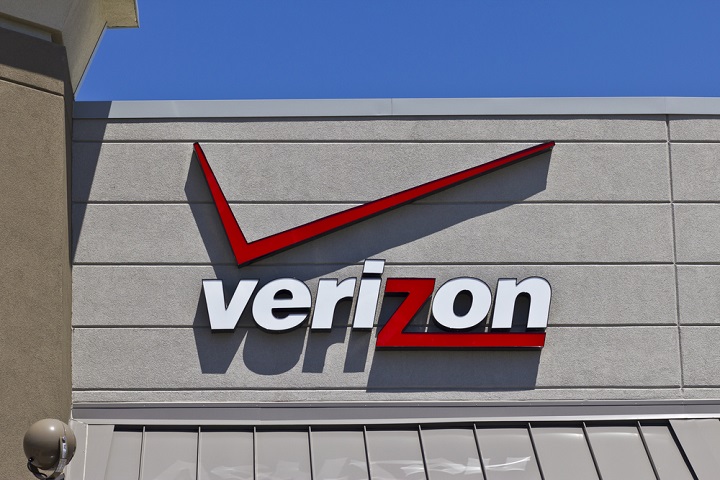For those following along with the ongoing price wars in the United States, you are most likely aware that there are some similarities between Sprint Corp. (NYSE:$S) and T-Mobile US Inc. (NASDAQ:$TMUS). The most noticeable similarity being that both companies are significantly smaller than long-time rivals Verizon Communications Inc. (NYSE:$VZ) and AT&T Inc. (NYSE:$T).
However, to compare Sprint and T-Mobile is similar to comparing a 1979 Ford Pinto to a brand-new Chevy Cruze as both vehicles are cheaper than a new Mercedes. It’s important to note that T-Mobile is taking share and spending money on its network, while Sprint is losing money and underinvesting in its network.
Sprint’s latest promotion looks like a direct attempt at fighting off the competition of T-Mobile and Verizon. Though it mainly targeted Verizon users, the latest promotion is available to those that are signed up with our mobile carriers. If customers bring over their phones to Sprint, they will receive a full year of unlimited data, text, and voice services. Additionally, customers will receive 10GB of monthly 4G hotspot data and HD video streaming – for free. That’s right, all of this for nothing!
Right now, Sprint’s standard unlimited pricing is pretty out there. Until June 30 of next year, Sprint has vowed to charge $50 a month for one line and $90 a month for up to five lines. This is a pretty significant move on Sprint’s part seeing as T-Mobile isn’t even remotely close to that playing field. As it is, T-Mobile charges $70 a month for one line and $140 a month for four.
So what’s the catch? Well to utilize Sprint’s latest promotion, an individual has to use Sprint’s network. Most people are reluctant to do this as the Kansas-based company’s network regularly ranks last in tests that measure things like reliability, availability and download speeds. Plus, Spring spent a total of $1.95 billion on cash capital expenditures in fiscal 2016. This means that Sprint’s forecast probably won’t start to improve in the short-term. Despite Sprint vowing to spend $3.5 billion to $4 billion on cash capex in fiscal 2017, this is still behind T-Mobile’s cash capex ($4.5 billion) and the company’s 2017 budget of $4.8 billion to $5.1 billion.
Also, while T-Mobile spent $8 billion in April in a FCC low-band spectrum action in an attempt to improve its in-building network coverage, Sprint decided not to participate in the auction. Therefore it’s not surprising to hear that Sprint’s network has suffered from a lack of low-band spectrum relative to Verizon and AT&T’s. T-Mobile’s network has also suffered from this, but at least they are trying to do something about the problem.
Many speculate that Sprint’s $32.6 billion net debt load that occurred in March had something to do with the decision to sit the auction out. Others believe that the debt load was caused by Sprint producing $521 million in free cash flow in fiscal 2016 despite massive capex cuts. On the other side of the equation, T-Mobile had $22.7 billion in debt starting in March and produced $1.4 billion in free cash flow in 2016 despite spending a lot more on capex. T-Mobile has also guided for FCF to increase at a 45% and 48% compound annual rate over the coming three years.
As of right now, Sprint’s discount pricing has only been rewarded with so much. Sprint disclosed 187,000 wireless subscriber net adds for the March quarter. This means that the company is down from 447,000 in 2016 and missed their estimate of 501,000. Additionally, Sprint lost 118,000 postpaid subs. This was caused by prepaid and wholesale/affiliate gains and the company’s average revenue per user dropped 8% annually to $47.34. This drop resulted in a 7% drop in Sprint’s wireless service revenue to $5.7 billion.
If you guessed that T-Mobile did better, you were right. The Washington-based company disclosed 1.14 million net adds which included 798,000 branded postpaid phone net adds. They also saw a 2.9% increase in branded postpaid phone ARPU to $47.53. T-Mobile’s service increased 11% to $7.3 billion and the company’s full-year branded postpaid net add guidance hiked up between 2.8 million to 3.5 million.
On the other side of the equation, Verizon lost 307,000 retail postpaid wireless subs in the first quarter, which included 289,000 phone subs. AT&T also reported that they had 191,000 postpaid net losses, but this was mainly caused by the 2.57 million connected device adds.
There was speculation before that this quarter’s numbers have been soft, but Sprint’s new promotion arriving a few weeks before the June quarter has fueled the fire even more. As of right now, T-Mobile plans to continue putting pressure and both Verizon and AT&T have been pricing even more aggressively than before. Analysts surveyed by FactSet expect, on average, 348,000 net adds for the June quarter. This is ideal as it would be much better than the March quarter of 187,000, but it would be down from 2016’s quarter of 377,000.
Additionally, Sprint and T-Mobile are holding merger talks in order to get regulators to look favorably on a deal. If that is the case, Sprint might feel that the company has more leverage if it continues to display meaningful subscriber growth. However, in order to do this, Sprint will have to keep up its current pricing as well as maintaining cash flow positive and spending enough money on its network.
All in all, T-Mobile has a good chance of calling Sprint’s bluff and unless Sprint’s financials start to tell a different story, the company’s latest promotion seems desperate rather than logical.
At Thursday’s close, Sprint shares dropped 1% to $8.06.
Featured Image: Depositphotos/© jetcityimage2











